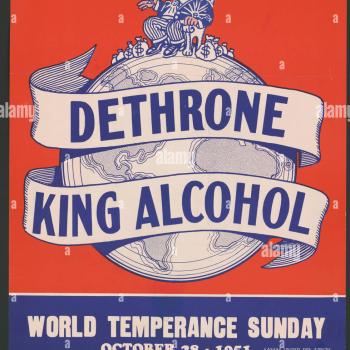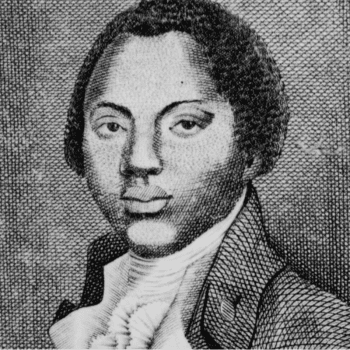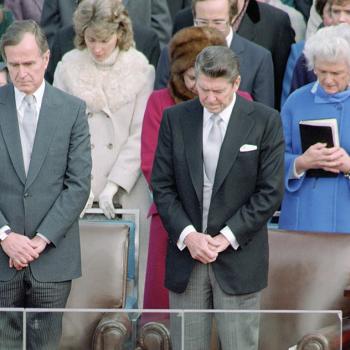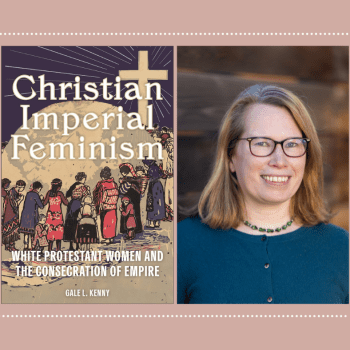Puritan New England’s reputation for rigidity and intolerance goes back almost all the way to Plymouth Rock (that’s another myth for another time).
By 1624, several of the English financial backers of New Plymouth had received complaints from settlers who did not share the separatist principles of the colony’s leaders. The Pilgrims allegedly were “condemning all other churches, and persons but yourselves and those in your way, and you are contentious, cruel and hard hearted, among your neighbours and towards such as in all points both civil and religious, jump not with you.” Plymouth Colony’s leaders faced more complaints after they banished a minister who had criticized the colony’s government and church and began holding his own worship services.
New England’s reputation for intolerance further grew after the establishment of the Massachusetts Bay Colony. It wasn’t just the occasional banishment and persecution of men and women such as Roger Williams, Anne Hutchinson, and Samuel Gorton. Rather, puritans in England — even those who became inclined toward Congregationalism (Independency) objected to the fundamental building blocks of the “New England Way.” Congregations excluded those who did not belong to covenanted churches from the Lord’s Supper and their children from baptism. In other words, even righteous men and women who arrived in New England could not partake of the sacraments until they qualified themselves to join one of the region’s churches. Although there was some variety across the region, New England’s Congregationalist churches established high standards for membership. Furthermore, in Massachusetts Bay at least, the franchise for colony-wide matters hinged on church membership.
By the mid-1640s, Independents in England wondered what was wrong with their Congregationalist counterparts across the Atlantic. Unlike the Presbyterians who controlled Parliament for most of the 1640s, English Independents — and Baptists and more radical sectarians even more so — generally favored a substantial amount of religious toleration. At the same time, men like Gorton and William Vassall came from New England with fresh reports of religious tyranny. By the 1650s, there was an unprecedented degree of religious liberty in old England. Protestants of all sorts — except for those who wanted to return to the episcopal order — could freely publish their views and gather for worship. Oliver Cromwell even permitted several hundred Jews to settle in England, which had expelled its Jewish population in 1290. At the same time, New England’s Congregational colonies shored up their religious establishments. In the mid-1640s, Plymouth Colony rejected a proposed bill for religious toleration, and a few years later the colony’s magistrates took action against a group of Baptists who had established a congregation in the town of Rehoboth.
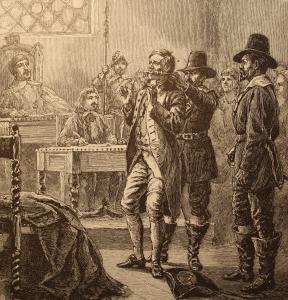
Adherents of the Society of Friends began arriving in New England in 1656. By 1661, Massachusetts Bay had cropped the ears of several Quakers and had executed four men and women, including Mary Dyer, a friend of Anne Hutchinson who had left the colony in 1638. The Quakers diligently documented all of the persecutions they sufferings, and not just the executions, whippings, and banishments. They recorded countless instances in which constables seized Friends’ property to settle fines stemming from both criminal convictions and church taxes. Quakers publications helped fix the idea that New England’s Congregational colonies were bastions of intolerance and persecution.
After the Restoration of the monarchy in England, religious dissenters gained greater measures of freedom in Massachusetts Bay, Connecticut, and New Plymouth. Baptists and Quakers were able to meet for worship, first in private homes, and then in meetinghouses. Still, Quakers in particular faced severe civil disadvantages, and governments required all citizens to pay taxes to support the established churches and their ministers.
What New England’s puritan leaders are most known for today is the 1692-93 execution of twenty alleged witches at Salem. Perhaps that is regarded less as an example of religious intolerance than as an episode of ignorance and fanaticism. Whether or not one includes the witchcraft trials, one can easily tell a long story of religious tyranny cruelty.
I have titled this post the “Myth of New England Puritan Intolerance.” I am using the term “myth” carefully. The magistrates, ministers, and many settlers in Massachusetts Bay, Plymouth, and Connecticut were intolerant. On balance, they had very negative views of a host of religious “others”: Catholics, Jews, Natives, mystics, and so forth. And on many occasions, they did treat religious dissenters cruelly, even if they were not quite as eager to do so as those dissenters alleged.
This myth of puritan intolerance has been useful for the way that subsequent generations of Americans have understood the trajectory of religious liberty in the United States. Puritan intolerance is a necessary starting point for what is usually a triumphant story of how religious minorities fought for and attained religious liberty, or, of how more enlightened ideas about the world displaced the ignorance and superstition of the seventeenth century. If one wishes to celebrate the ideals of founders such as George Washington, James Madison, or Thomas Jefferson, the puritans are a useful foil.
Beginning with my next post, however, I will argue that however useful this idea has been as an American myth, it is not very useful for understanding the history of seventeenth-century New England. For starters, it implies that New England’s leaders were outliers within the trans-Atlantic world they inhabit. They were not. While the idea of religious toleration (usually limited) gained significant support between the 1640s and the 1690s, very few English men and women favored anything approaching complete religious liberty. The Congregationalist ministers and magistrates of New England, moreover, were quite ordinary in their desire for religious uniformity and their determination to punish stubborn heresy. I will flesh out that argument next time.







